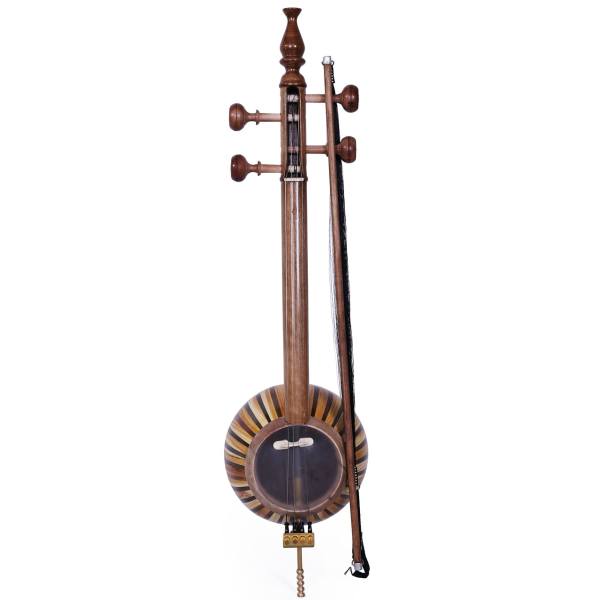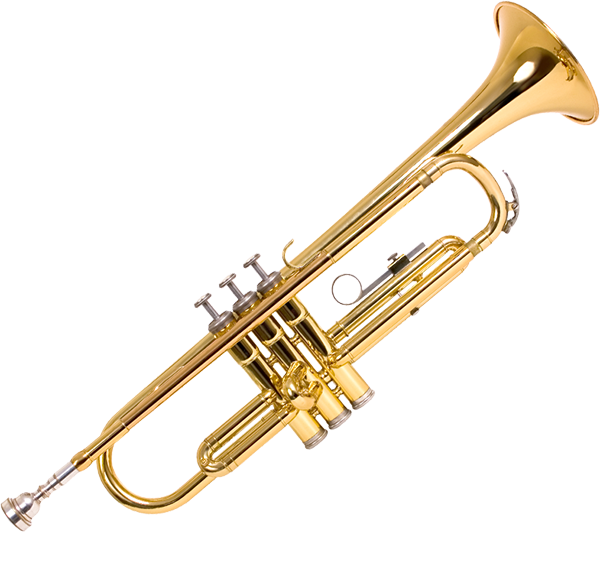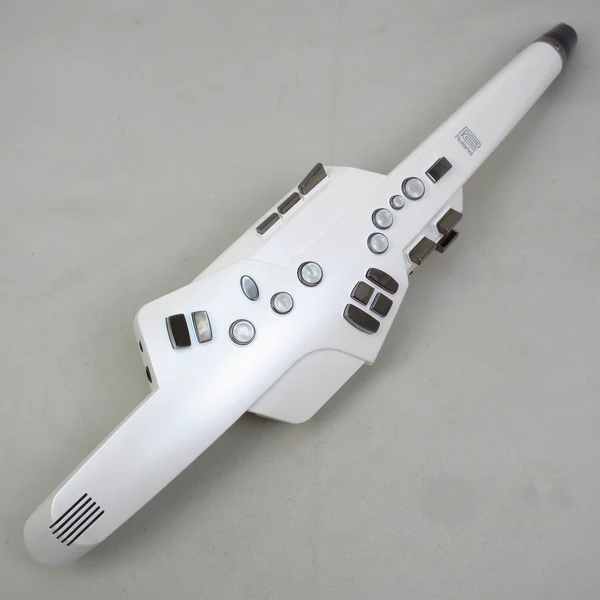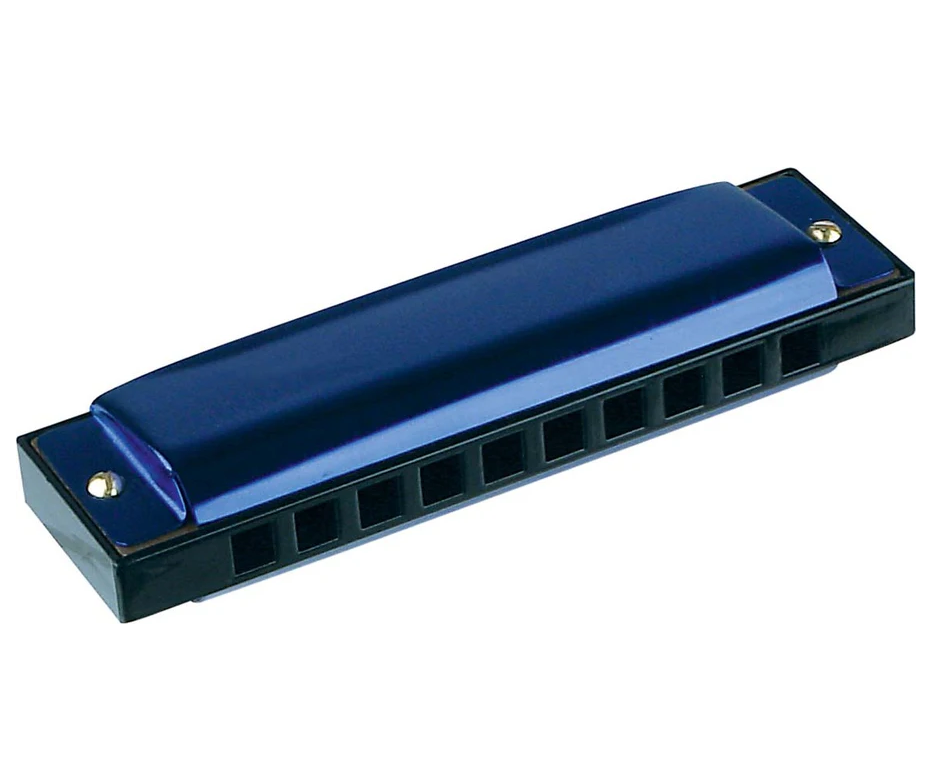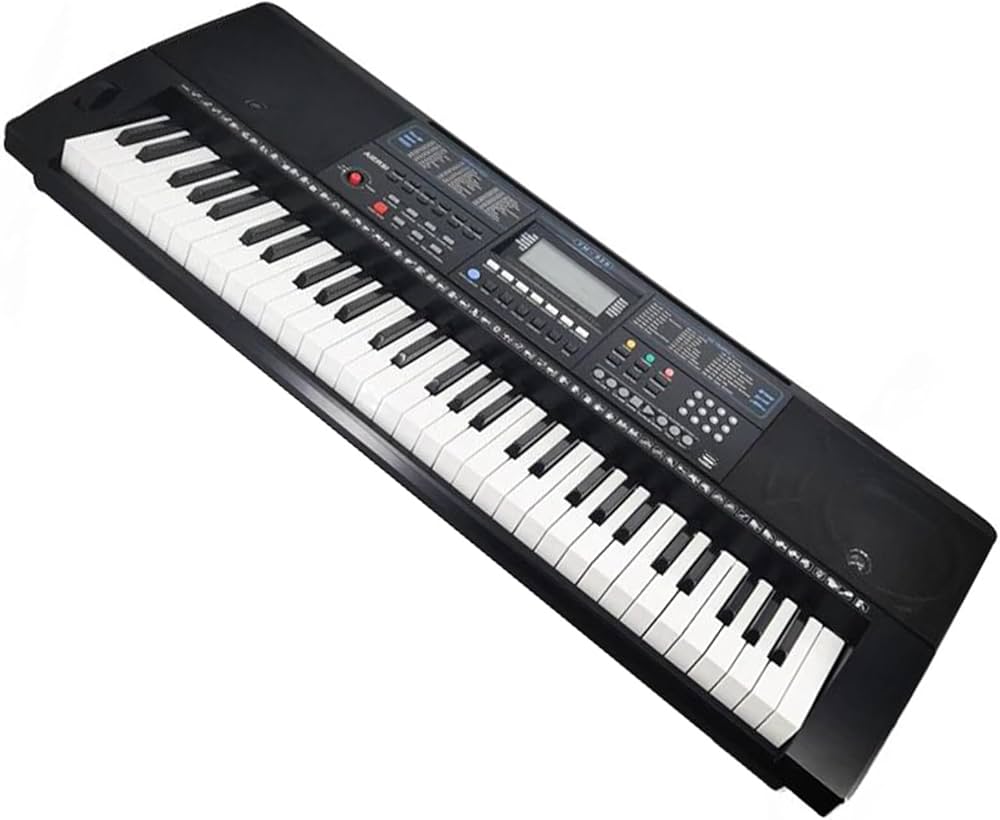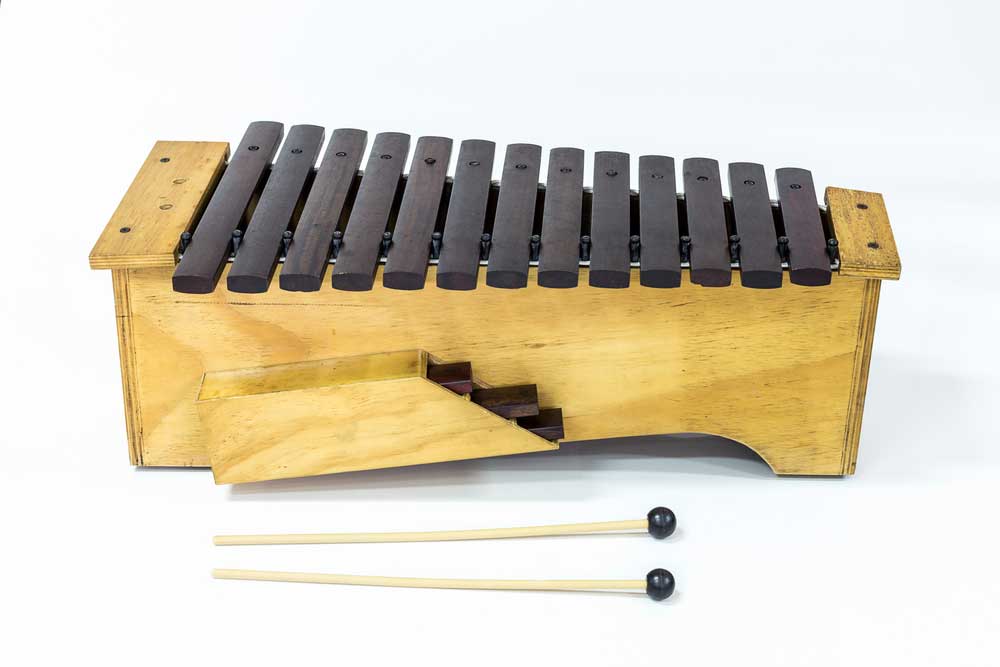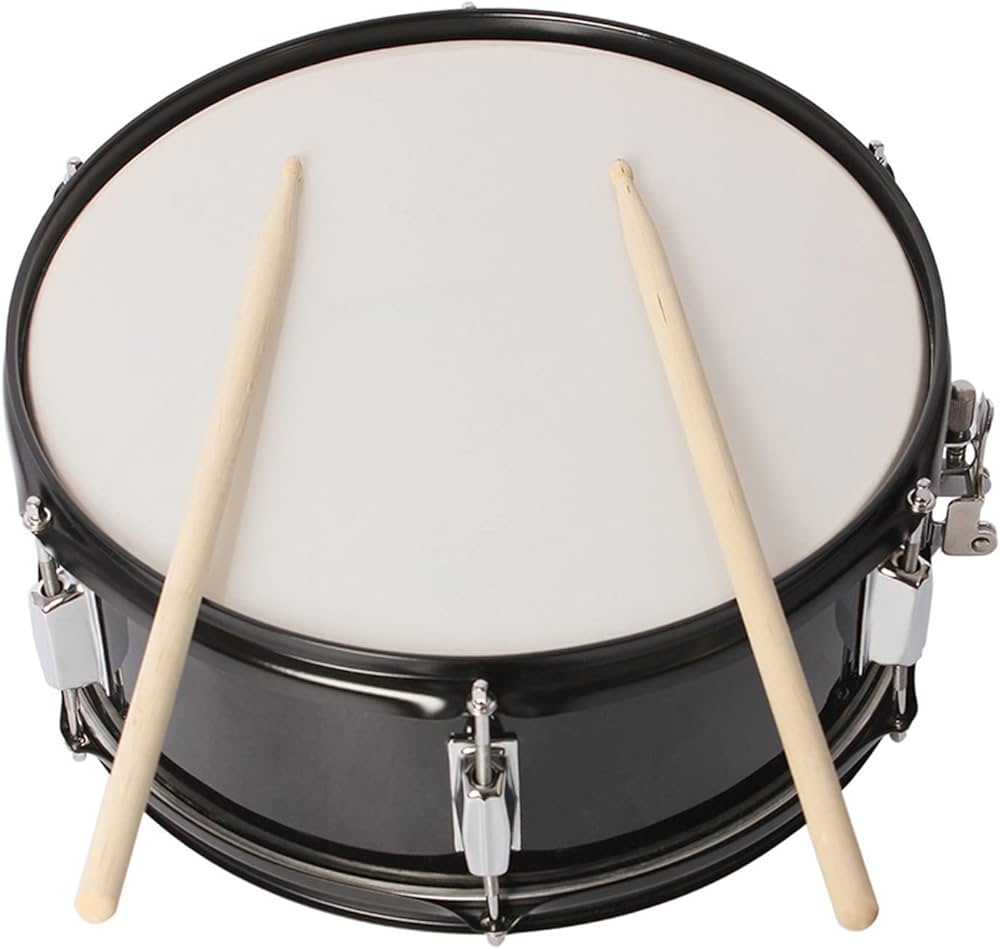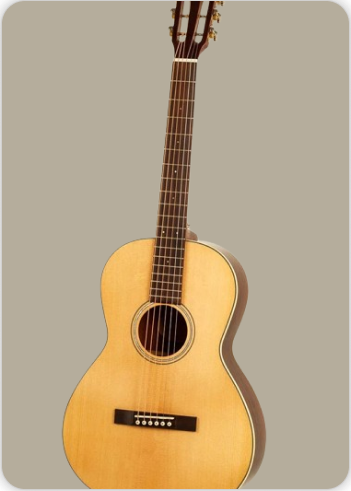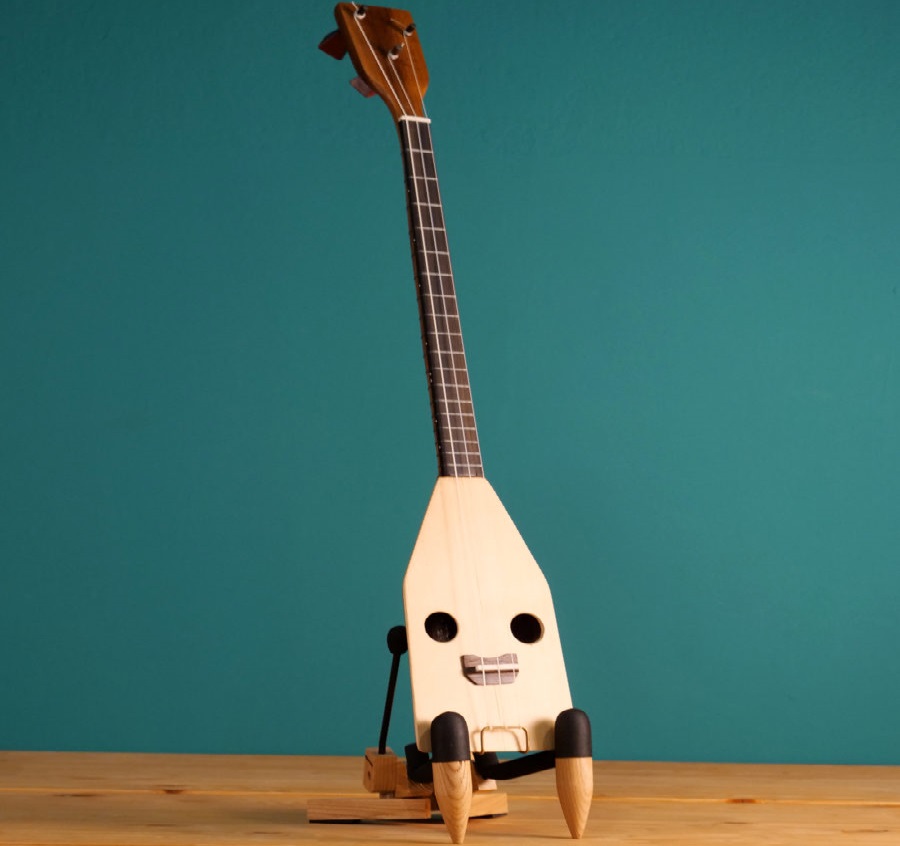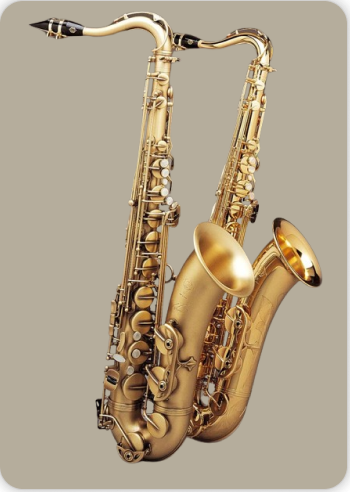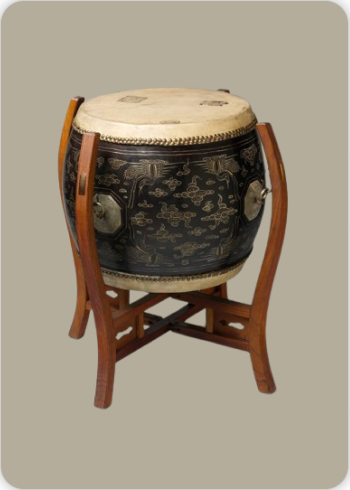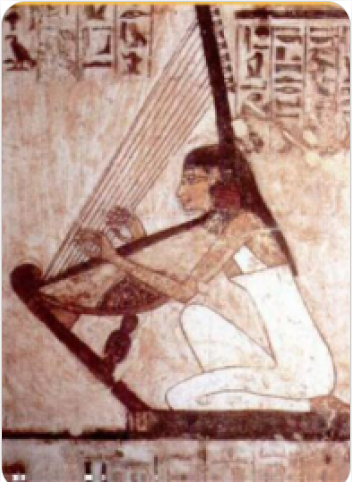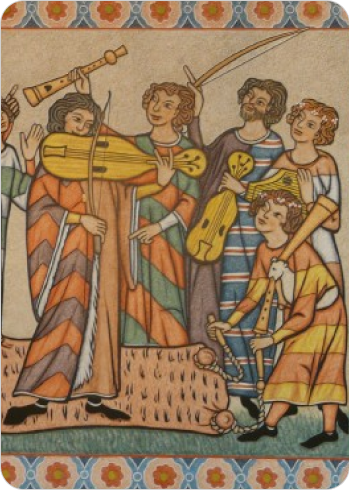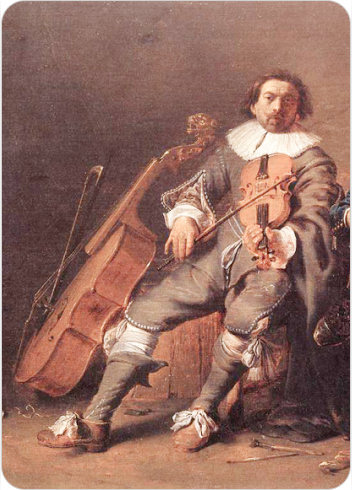Pandura
Plucked Instruments
Asia
Between 0 and 1000 AD
Video
The pandura is a historically significant stringed instrument that belongs to the broad family of lutes, which are characterized by their long necks and resonant bodies. Originating in the ancient Mediterranean world, the pandura is particularly associated with ancient Greece, though its roots and influences extend across the Near East and into North Africa and Asia. The instrument is typically constructed with a small to medium-sized resonating chamber and a long neck fitted with frets. Most commonly, the traditional pandura features three strings, which is why it is sometimes referred to as a “trichordon” in Greek, meaning “three-stringed.” The strings are plucked either with the fingers or with a plectrum, and the instrument is held horizontally, with the neck extending to the player’s left.
Type of Instrument
The pandura is classified as a plucked string instrument within the lute family. Lutes are distinguished by their long necks and hollow bodies, which serve as resonators for the vibrating strings. The pandura, with its three strings and fretted neck, shares many structural and functional similarities with other lutes, such as the oud, the saz, and the modern guitar. The instrument is played by plucking the strings, either with the fingers or with a plectrum, which allows for a wide range of articulations and dynamic expressions. The presence of frets on the neck enables the player to produce precise pitches and execute complex melodic passages.
History of the Pandura
The history of the pandura is both ancient and geographically expansive, tracing its origins to the earliest civilizations of the Near East and the Mediterranean. The instrument’s ancestors can be found in the musical traditions of the Sumerians and Akkadians, who played similar stringed instruments as early as the third millennium BCE. The name “pandura” itself is believed to derive from the Sumerian word “ban.tur,” which referred to a small bow or musical bow, an early form of stringed instrument. As musical technology evolved, the bow was straightened and fitted with a resonator, giving rise to the earliest lutes. By the time of ancient Greece, the pandura had become a well-established instrument, appearing in artwork and literary references from the fourth century BCE onward. The instrument was widely used in Greece and later spread to the Roman Empire, where it continued to evolve and diversify. The pandura’s influence extended beyond the Mediterranean, reaching into Persia, Assyria, and Egypt, where related instruments were developed and adapted to local musical traditions. In the Roman world, the pandura was known as the “pandore” or “bandore,” and it played a prominent role in both popular and elite musical contexts. The instrument’s popularity endured through the Middle Ages and into the Renaissance, where it gave rise to a variety of regional variants, including the Italian “chitarra italiana,” the mandore, and the mandola.
In the Islamic world, the instrument was known as the “tanbur” or “tambura,” and it became an integral part of the musical cultures of Persia, the Arab world, and North Africa. The pandura’s spread across continents and centuries is a testament to its adaptability and the universal appeal of its sound. Its descendants can be found in the folk and classical music traditions of Greece, the Balkans, the Caucasus, and the Middle East, where instruments such as the bouzouki, the tamburica, the panduri, and the saz continue to be played today. The pandura’s enduring presence in these diverse musical cultures underscores its significance as a foundational instrument in the history of stringed music.
Construction and Physical Structure
The construction of the pandura reflects both the ingenuity of its makers and the practical requirements of its musical function. The instrument typically features a resonating body, which may be pear-shaped, oval, or triangular, depending on regional and historical variations. The body is usually carved from a single piece of wood or assembled from carefully joined wooden components, with a vaulted back that enhances the instrument’s acoustic properties. The soundboard, which forms the top of the resonating chamber, is often made from a thin, resonant wood such as spruce or cedar, and may be decorated with intricate carvings or inlays. The neck of the pandura is long and slender, fitted with a series of frets that allow the player to produce precise pitches. In some historical examples, the frets were made from movable leather cords, which could be adjusted to accommodate different musical scales and tunings. The headstock, located at the end of the neck, is fitted with tuning pegs that allow the player to adjust the tension of the strings and thereby control their pitch. The strings themselves were traditionally made from gut, though modern replicas may use nylon or other synthetic materials. The instrument is strung with three strings, which are anchored at the base of the body and stretched over the bridge and up the neck to the tuning pegs.
The bridge, located on the soundboard, serves to transmit the vibrations of the strings to the resonating chamber, amplifying the sound. The overall design of the pandura is both functional and aesthetically pleasing, with careful attention paid to the balance, weight, and ergonomics of the instrument. The instrument is typically played in a seated position, with the body resting on the player’s lap and the neck extending to the left. The left hand presses the strings against the frets to change the pitch, while the right hand plucks or strikes the strings to produce sound. The instrument’s construction allows for a wide range of expressive possibilities, from delicate melodic lines to vigorous rhythmic accompaniment. The craftsmanship involved in making a pandura is a testament to the skill and artistry of its makers, who have preserved and refined the instrument’s design over centuries.
Types of Pandura
There are several types of pandura, reflecting the instrument’s long history and wide geographical distribution. In antiquity, at least two distinct varieties of the pandura were recognized: the pear-shaped type, which was common in Assyria and Persia and later introduced into Greece and Rome, and the oval type, which was favored in Egypt and also found in ancient Persia and among the Arabs of North Africa. The pear-shaped pandura typically features a body that tapers gracefully from the base to the neck, with rounded corners and a vaulted back. This type of instrument was often depicted in ancient Greek and Roman art, and it served as the model for later European lutes. The oval type, by contrast, has a more rounded body and was particularly popular in Egypt and North Africa, where it was adapted to local musical styles and techniques. In the Islamic world, the instrument evolved into the tanbur or tambura, which remains an important part of the musical traditions of Persia, Turkey, and the Arab world. In the Caucasus region, the instrument is known as the panduri, and it continues to be played in Georgia and neighboring countries.
In Greece, the pandura gave rise to the tambouras, a long-necked lute that is still used in Greek folk music. The instrument also influenced the development of the bouzouki, a key instrument in Greek popular music. In the Balkans, the tamburica family of instruments traces its lineage to the pandura, with various regional variants found in Croatia, Serbia, and other countries. The diversity of pandura types reflects the instrument’s adaptability and its ability to absorb and reflect the musical traditions of the cultures that have embraced it. Each type of pandura has its own distinctive features, tuning systems, and playing techniques, but all share the essential characteristics of a long-necked, plucked string instrument with a resonant body and a set of frets.
Characteristics of the Pandura
The pandura is distinguished by several key characteristics that have contributed to its enduring popularity and influence. First and foremost, the instrument’s three-string configuration allows for a wide range of melodic and harmonic possibilities, despite its apparent simplicity. The use of frets enables the player to produce precise pitches and execute complex musical passages, while the plucked playing technique allows for a variety of articulations and dynamic expressions. The instrument’s resonant body and vaulted back contribute to its bright, clear sound, which is capable of cutting through the texture of an ensemble or standing out in solo performance. The pandura’s design is both elegant and practical, with careful attention paid to balance, weight, and ergonomics. The instrument is relatively lightweight and portable, making it ideal for use by traveling musicians and performers. The pandura’s construction allows for a wide range of tunings and playing styles, which has facilitated its adoption and adaptation by a variety of musical cultures.
The instrument’s aesthetic appeal is enhanced by the use of decorative elements such as carvings, inlays, and painted motifs, which reflect the artistic sensibilities of its makers and users. The pandura’s cultural significance is underscored by its frequent depiction in ancient art and literature, where it is often associated with music, poetry, and the arts. The instrument has served as a symbol of artistic refinement, cultural identity, and social status, and it continues to be celebrated as a key element of the musical heritage of the Mediterranean and the Near East. The pandura’s influence can be seen in the development of a wide range of later stringed instruments, from the European lute and mandolin to the various regional lutes of the Middle East, the Caucasus, and the Balkans. Its enduring appeal is a testament to the instrument’s versatility, expressiveness, and adaptability, qualities that have ensured its place in the history of music for millennia.
Playing Techniques and Sound Modifications
The pandura is played by holding the instrument horizontally, with the neck to the left, allowing the left hand’s fingers to press the strings against the frets, while the right hand is responsible for plucking or strumming the strings. The instrument typically has three strings, though some historical variations featured two or even four strings. Players can use their fingers or a plectrum to pluck the strings, which produces a bright, resonant tone. The presence of frets on the long neck enables chromatic playing, and the pandura is capable of producing a full chromatic scale ranging from D3 to G5, covering about two and a half octaves.
One of the unique aspects of the ancient pandura was the use of movable leather cords as frets, allowing musicians to adjust the intervals and thus adapt the instrument to different musical modes or genera, which were central to ancient Greek music theory. This flexibility in fret placement enabled a wide range of tonal possibilities and allowed the instrument to be used in various regional musical styles. Players could also modify the sound by varying the pressure on the strings, using vibrato techniques, or by striking the strings near the bridge for a sharper, more percussive tone. The use of a plectrum, often made from bone or wood, could further alter the timbre, providing a brighter and more articulate sound compared to finger-plucking.
Famous Compositions
While there are no surviving written compositions specifically for the ancient Greek pandura, the instrument was commonly used to accompany lyric poetry, dance, and various forms of entertainment in antiquity. Its role was primarily as an accompaniment instrument, providing harmonic support for vocalists or dancers. In the modern era, replicas of the pandura have been used to perform ancient Greek music reconstructions and folk songs, such as the performance of the folk song “Ay Giz” by Marios Podaras on a contemporary pandura replica. The pandura’s musical legacy is also reflected in the repertoire of its descendants, such as the Greek tambouras, bouzouki, and the Georgian panduri, which have rich traditions of folk and classical compositions. These instruments often feature in traditional dances, epic storytelling, and celebrations, carrying forward the musical spirit of the ancient pandura.
Most Influential Players
Due to the antiquity of the pandura, the names of individual players from ancient times have not been preserved. However, the instrument’s influence is evident in the lineage of musicians who played its descendants. In the modern revival of ancient Greek music, performers such as Marios Podaras have gained recognition for their skillful interpretations on the pandura, using historically informed techniques and instruments modeled after ancient designs. In the broader context, the pandura’s legacy can be seen in the virtuosity of players of related instruments, such as the masters of the bouzouki in Greece and the panduri in Georgia. These musicians have contributed to the preservation and evolution of the instrument’s playing techniques and repertoire, ensuring that the spirit of the pandura continues to inspire new generations.
Historical Performances or Concerts
The pandura was a staple of musical life in ancient Greece and Rome, frequently depicted in artwork accompanying banquets, theatrical performances, and religious ceremonies. It was commonly used to accompany lyric poets and dancers, providing a rhythmic and harmonic foundation for performances. In Roman times, the instrument was further developed and appeared in public celebrations and private gatherings, as evidenced by depictions in Roman sculptures and frescoes. In modern times, historical performances featuring the pandura have been staged as part of efforts to reconstruct ancient Greek music. These concerts often use meticulously crafted replicas and are informed by scholarly research into ancient musical practices. Such performances aim to recreate the soundscape of antiquity, offering audiences a glimpse into the musical traditions of the past.
Maintenance and Care
Proper maintenance of the pandura is essential to preserve its sound quality and longevity. The instrument’s body, typically made from hardwoods, should be kept in a stable environment to prevent cracking or warping due to changes in temperature and humidity. Regular cleaning with a soft, dry cloth helps to remove dust and oils that can accumulate on the wood and strings. The strings, traditionally made from gut or modern synthetic materials, require periodic replacement to maintain optimal tone and playability. Tuning should be performed carefully to avoid excessive tension, which could damage the instrument’s neck or soundboard. If the pandura features movable leather frets, these should be checked regularly for wear and adjusted as needed to ensure accurate intonation. Storage in a padded case or on a secure stand protects the instrument from accidental damage. For instruments with decorative elements or historical replicas, it is advisable to avoid exposure to direct sunlight or moisture, which can degrade materials over time. Regular inspection by a skilled luthier can help address any structural issues and preserve the instrument’s historical authenticity.
Interesting Facts and Cultural Significance
The pandura holds a unique place in the history of stringed instruments, serving as a direct ancestor to a wide range of lutes and long-necked instruments across Europe, the Middle East, and Central Asia. Its influence can be traced through instruments such as the Greek tambouras, the Georgian panduri, the Persian tanbur, and the Balkan tamburica. The instrument’s name itself is rooted in ancient languages, with connections to the Sumerian word for “small bow,” reflecting its origins in the transformation of the musical bow into a fretted lute. One fascinating aspect of the pandura is its depiction in ancient art, where it is often shown in the hands of musicians, dancers, and even mythological figures. These images provide valuable insights into the instrument’s construction and playing techniques, as well as its role in social and religious life. The pandura’s adaptability and portability made it a popular choice for traveling musicians and entertainers, contributing to its widespread diffusion across cultures. The instrument’s cultural significance extends to its role in the transmission of musical knowledge and tradition. As a forerunner of the lute family, the pandura helped lay the foundation for the development of Western string instruments, including the guitar and mandolin. Its use of frets and chromatic tuning systems influenced the evolution of musical scales and modes in both Eastern and Western music.
In some regions, the pandura and its relatives are still used in traditional ceremonies and celebrations, symbolizing continuity with the past and the enduring power of music to bring communities together. The instrument’s revival in contemporary performances and academic research highlights its enduring appeal and the fascination it holds for musicians and historians alike. The pandura’s journey from ancient Greece and Rome to modern times is a testament to the resilience and adaptability of musical traditions. Its sound, once heard in the courts of emperors and the gatherings of poets, continues to resonate in the hands of today’s performers, bridging the gap between antiquity and the present.
Cultural Legacy and Modern Relevance
The pandura’s cultural legacy is evident in the continued popularity of its descendants, which are integral to the musical identities of various regions. In Greece, the tambouras and bouzouki are central to folk and popular music, while in Georgia, the panduri remains a beloved instrument in traditional ensembles. These instruments not only preserve the musical techniques of the past but also serve as vehicles for innovation and cross-cultural exchange. Modern instrument makers, such as those producing LUTHIEROS Pandura replicas, are dedicated to reviving the authentic sound and craftsmanship of the ancient instrument. Their work enables musicians and audiences to experience the music of antiquity with historical accuracy, fostering a deeper appreciation for the rich tapestry of human musical expression. The pandura’s story is one of transformation and continuity, reflecting the dynamic interplay between tradition and innovation. Its enduring presence in the musical landscape is a reminder of the profound connections that music forges across time and space, uniting people through shared sounds and stories.
FAQ
What is the historical significance of the Pandura?
The Pandura dates back to ancient Greece, around the 4th century BCE. It was commonly used in Hellenistic music and is considered an ancestor of many European lutes. Ancient art often depicts the instrument in the hands of musicians and poets. It played a role in both secular and ceremonial music traditions.
What materials are traditionally used to construct a Pandura?
Traditional Panduras are crafted from carved wood, typically walnut or mulberry for the body and neck. The strings were historically made from gut, though modern versions may use nylon. The soundboard was often thin and made from softwood like spruce. Simple decorations might be etched or inlaid for ornamentation.
What are the main musical features of the Pandura?
The Pandura has a bright, sharp tone and is typically fretted with three strings. It produces a drone-like accompaniment and melodic lines. The instrument allows for plucked or strummed techniques. It is ideal for modal music and often used in traditional folk and narrative styles.
 Links
Links
References
Other Instrument
Categories
